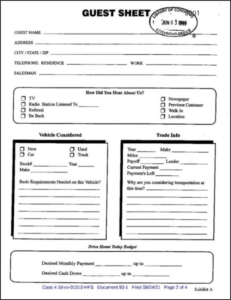The US Court of Appeals for the Federal Circuit vacated a district court’s final judgment of noninfringement, finding that the district court improperly narrowed the constructions of certain claim terms to particular features recited in the specification. Promptu Sys. Corp. v. Comcast Corp., Case No. 22-1939 (Fed. Cir. Feb. 16, 2024) (Moore, Prost, Taranto, JJ.)
Promptu filed a lawsuit against Comcast alleging infringement of two patents. The patents describe and claim subject matter generally related to voice recognition but have materially different specifications. The first patent describes using remote voice recognition systems to deliver content in response to a user’s speech request (content delivery patent), while the second patent describes using remote voice recognition systems to control a user’s television set based on a user’s speech command (control patent).
The content delivery patent’s representative claim recites a method for using a “back channel containing a multiplicity of identified speech channels from a multiplicity of user sites presented to a speech processing system at a wireline node in a network supporting at least one of cable television delivery and video delivery” as well as a “method of operating at least part of a speech recognition system coupled to a wireline node in a network [for] processing a multiplicity of received identified speech channels to create a multiplicity of identified speech content.” Meanwhile, the claim of the control patent recites “a centralized multi-user voice operated television control system, comprising . . . a centralized processing station configured to receive and process second output from a multitude of television set top boxes by applying voice recognition.”
During the underlying district court proceeding, the district court adopted claim constructions proposed by Comcast. Based on those claim constructions, Promptu stipulated to and moved for entry of a final judgment of no infringement. After the district court granted Promptu’s motion, Promptu appealed.
Promptu challenged the district court’s construction of three claim limitations from the content delivery patent (“back channel,” “multiplicity of received identified speech channels” and “speech recognition system coupled to a wireline node”) and one claim limitation from the control patent (“centralized processing station”). In accordance with long-standing precedent, the Federal Circuit reviewed claim construction by affording the words of the claims their ordinary meaning in the context of the claims and specification.
The Federal Circuit concluded that the district court erred by narrowly construing “back channel” in the content delivery patent as being limited to a “fixed band of frequencies or time slot(s) for transmitting signals to a speech processing system or engine” because nothing in the claim language or the specification required limitation to a “fixed band of frequencies or time slot.” To the contrary, the specification of the patent disclosed the back channel broadly while recognizing the possibility of using different protocols and formats along different subsections of the path or route from user site to speech recognition system. Given the breadth of the techniques for the back channel disclosed in the specification, the Court found no reason to narrow the claims [...]
Continue Reading
read more


 Subscribe
Subscribe



